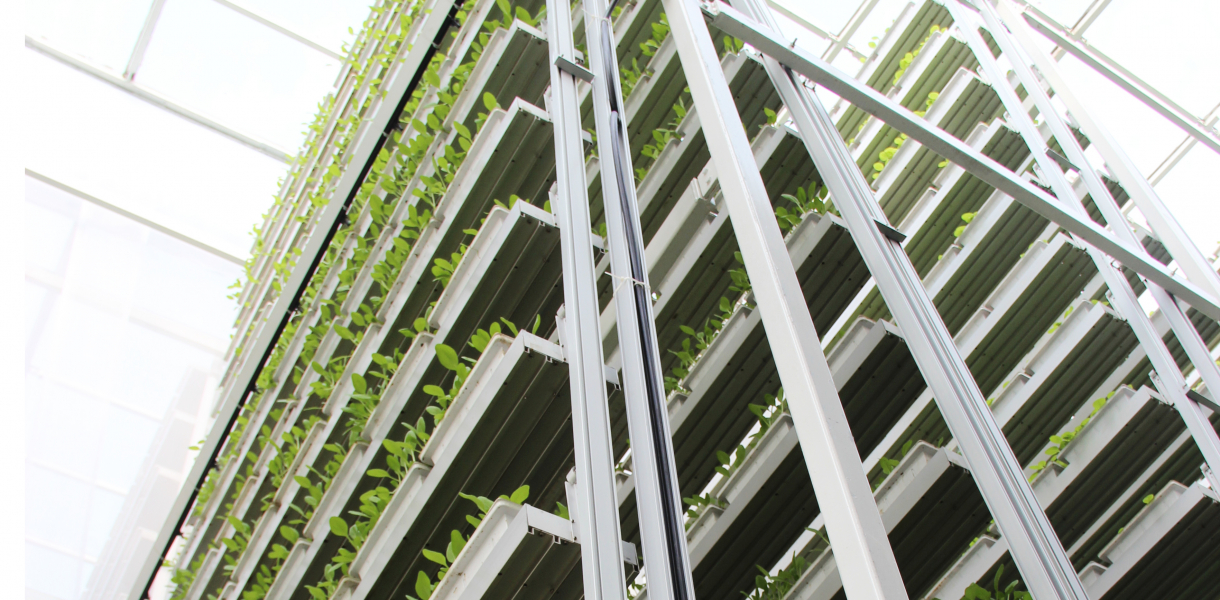The Sky Urban Vertical Farming System is a revolutionary agriculture solution that alleviates environmental impact while making a bold move towards global food security. Addressing a variety of pressing global challenges, the system is the world's first low carbon, water-driven plot that grows vegetables through efficient and highly sustainable production methods. Using minimal land, water and energy resources, the system provides the community with fresh, locally grown vegetables, and has a dramatically smaller carbon footprint than traditional farming and import systems.
Although the concept of vertical farming has been around for over a century, very few have been able to master the technique like Singaporean company Sky Greens. Housed in protected outdoor greenhouses, each tower – almost nine meters tall – contains 38 shelves each growing a range of tropical vegetables. The shelves slowly rotate throughout the day, allowing each shelf to receive sunlight while at the top and water while at the bottom. Using gravity to its advantage, the rotating 1.7-ton structure is powered using a hydraulic system, which requires only 0.5 litres of water per day -- the water is also reused on the vegetables once the cycle has been completed. Cultivated in a controlled environment, vegetables can be grown all year round with protection from the elements. Compared to traditional monolayer farms, the vertical farming system produces at least ten times more per land area unit.
Sky Greens' towers currently produce three popular Asian vegetables including nai bai, xiao bai cai and Chinese cabbage, which can be harvested every 28 days. The urban-grown vegetables cost only 20 cents more per kilogramme than the imported varieties. Sky Greens already supply NTUC FairPrice, Singapore's largest grocery retailer that has a network of over 230 outlets and supermarkets.
Facts about the Global Challenge
- Singapore has five million people on a landmass of just 715 square kilometres. Due to a lack of land space, the nation previously imported almost 93 per cent of all their fresh produce from neighbouring countries such as Malaysia, Thailand and the Philippines, as well as from more distant trading partners like Australia, New Zealand, Israel and Chile.
- The demand for food around the globe is already growing at a formidable rate, and the United Nations (UN) predicts that by 2050 the global population will surpass nine billion. Continued traditional farming is a highly taxing process on the environment, as well as an unsustainable use of resources. Worldwide, agriculture accounts for 70 per cent of all water consumption, and much of the land on which the world's food is grown has become exhausted and is no longer usable.
- Vertical farming is not by any means a new idea, but can be traced back to the Indigenous people of South America and East Asia who originally used vertically layered growing techniques to produce rice and other crops. The term 'vertical farming' was first coined in 1915; however, development of the idea was rather slow with the concept only coming to successful commercial fruition in the last decade.
INDEX: AWARD 2015 WINNER - SKY URBAN VERTICAL FARMING SYSTEM (HD) from The Index Project on Vimeo.




